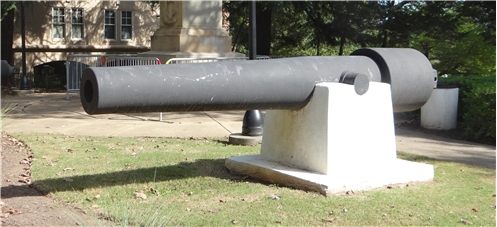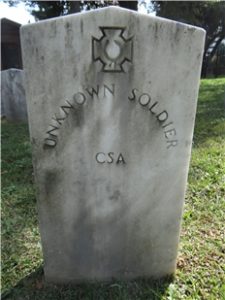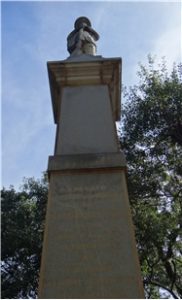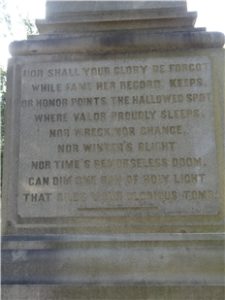
Plague Journal, Not Over
Monday dawns as another mid-Fall, blue-sky day in Greenville, South Carolina. Our plan is to leave for Asheville, North Carolina shortly. The drive will be short. I can see the blue mountains on the distant horizon from here.
Yesterday I spent some time walking among the graves in Springwood Cemetary. The place, a quiet plot of land just across Main street from the front entry of our Holiday Inn is within a block or two of the Business/entertainment district of Greenville. Graves in the cemetery date from the early 1800s. More than 10,000 people are buried here, many in unmarked graves.
At the end of life, when one is dead and buried, does it matter who you were? Of course what you did, your deeds continue to reverberate. Death offers no respite from cause and effect. The history which you lived to make, matures to frame successive generations. To the extent among the living, someone has the will to remember you, your name matters. To aid the memories of the living, the names, the descriptive inscriptions on the tombstones surely matter.
 I walked the rows of tombstones pausing to read some inscriptions. The dead do not “rest” unless you mean that their opportunity to contribute to the living is over. I think one ought to feel unrelieved sadness while among graves. The temptation to feel a nostalgia, a warm veneration for the personages and deeds of the past is something we ought to resist.
I walked the rows of tombstones pausing to read some inscriptions. The dead do not “rest” unless you mean that their opportunity to contribute to the living is over. I think one ought to feel unrelieved sadness while among graves. The temptation to feel a nostalgia, a warm veneration for the personages and deeds of the past is something we ought to resist.
Springwood Cemetery is a place of veneration for the Confederacy, and for General Robert E. Lee in particular. Eighty unnamed Confederate dead are buried here. There are two rows o f gravestone markers for unknown Confederate soldiers. Would not one gravestone have sufficed? In the imagination I visualize an inscription on my idealized grave marker which reads:
f gravestone markers for unknown Confederate soldiers. Would not one gravestone have sufficed? In the imagination I visualize an inscription on my idealized grave marker which reads:
“Unknown, Vaporized on the line of battle.”
My mind feels the onrush of vertigo that thousands of young men and boys, yeoman farmers, rushed into the maw of war on behalf of their “slave holding betters.” They would have thought of the aristocratic planters as “their betters.” The substantive difference between a Plantation owning family and a small farmer was the financial ability to make use of human trafficking to support the labor necessary for their many fields of cotton.
 The imposing tall monument at the head of the cemetery references the gallantry of the Confederate war dead. The poetic verse is laced with religious overtones.
The imposing tall monument at the head of the cemetery references the gallantry of the Confederate war dead. The poetic verse is laced with religious overtones.
A plaque displaying the iconic image of Lee on his horse, Traveler mentions that he is adored, enshrined in every Southerner’s heart as the battlefield leader of the rebellion. The plaque was installed in 1935.
I concluded my visit to Springwood cemetery with a somber feeling. I have good reason to believe the war of rebellion is not over.
NOR SHALL YOUR GLORY BE FORGOT,
WHILE FAME HER RECORD KEEPS,
OR HONOR POINTS THE HALLOWED SPOT,
WHERE VALOR PROUDLY SLEEPS,
NOR WRECK NOR CHANCE,
NOR WINTER’S BLIGHT,
NOR TIME’S REMORSELESS DOOM,
CAN DIM ONE RAY OF HOLY LIGHT,
THAT GUILDS YOUR GLORIOUS TOMB.